【TI毫米波雷达】IWR6843AOP的官方文件资源名称BUG,选择xwr68xx还是xwr64xx,及需要注意的问题
【TI毫米波雷达】IWR6843AOP的官方文件资源名称BUG,选择xwr68xx还是xwr64xx,及需要注意的问题
文章目录
- demo工程out_of_box文件
- 调试bin文件名称
- 需要注意的问题
- 附录:结构框架
- 雷达基本原理叙述
- 雷达天线排列位置
- 芯片框架
- Demo工程功能
- CCS工程导入
- 工程叙述
- Software Tasks
- Data Path
- Output information sent to host
- List of detected objects
- Range profile
- Azimuth static heatmap
- Azimuth/Elevation static heatmap
- Range/Doppler heatmap
- Stats information
- Side information of detected objects
- Temperature Stats
- Range Bias and Rx Channel Gain/Phase Measurement and Compensation
- Streaming data over LVDS
- Implementation Notes
- How to bypass CLI
- Hardware Resource Allocation
demo工程out_of_box文件
在SDK文件包下的demo部分
C:\ti\mmwave_sdk_03_06_00_00-LTS\packages\ti\demo
有如下几组文件
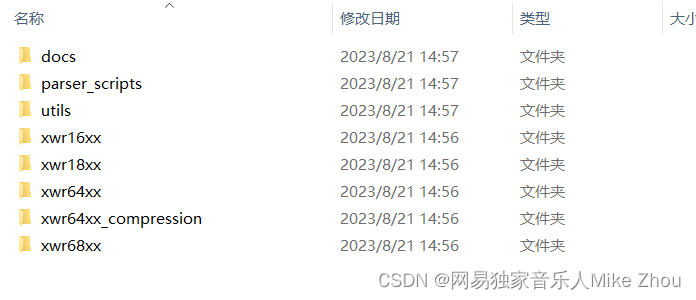
文件包中包含了各个芯片的demo工程所需的源代码文件
而如果要导入工程 则需要在工业雷达包的以下路径找到:
C:\ti\mmwave_industrial_toolbox_4_12_0\labs\Out_Of_Box_Demo\src

其中包含了各个芯片的工程属性文件 用于生成CCS工程
其中 6443(64xx)在UniFlash中是不存在的

但其在数据手册中与6843共用(IWR6443只在芯片手册中提到过 貌似没有相关市场 可能是已经下架了)
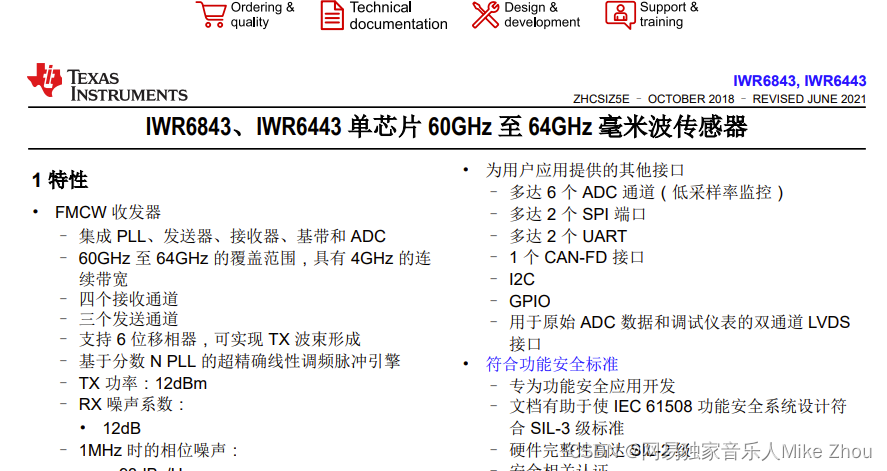
打开xwr6843AOP的out_of_box_6843_aop.projectspec文件
其最下方的工程所需文件路径如下:

<!-- Project files --><file path="${COM_TI_MMWAVE_SDK_INSTALL_DIR}/packages/ti/datapath/dpc/objectdetection/objdethwa/src/objectdetection.c" openOnCreation="false" excludeFromBuild="false" action="copy"/><file path="${COM_TI_MMWAVE_SDK_INSTALL_DIR}/packages/ti/demo/xwr64xx/mmw/data_path.c" openOnCreation="false" excludeFromBuild="false" action="copy"/><file path="${COM_TI_MMWAVE_SDK_INSTALL_DIR}/packages/ti/demo/xwr64xx/mmw/main.c" openOnCreation="false" excludeFromBuild="false" action="copy"/><file path="${COM_TI_MMWAVE_SDK_INSTALL_DIR}/packages/ti/demo/xwr64xx/mmw/mmw_cli.c" openOnCreation="false" excludeFromBuild="false" action="copy"/><file path="${COM_TI_MMWAVE_SDK_INSTALL_DIR}/packages/ti/demo/xwr64xx/mmw/mmw_lvds_stream.c" openOnCreation="false" excludeFromBuild="false" action="copy"/><file path="${COM_TI_MMWAVE_SDK_INSTALL_DIR}/packages/ti/demo/xwr64xx/mmw/mmw.cfg" openOnCreation="false" excludeFromBuild="false" action="copy"/><file path="${COM_TI_MMWAVE_SDK_INSTALL_DIR}/packages/ti/demo/xwr64xx/mmw/mss_mmw_linker.cmd" openOnCreation="false" excludeFromBuild="false" action="copy"/><file path="${COM_TI_MMWAVE_SDK_INSTALL_DIR}/packages/ti/demo/utils/mmwdemo_rfparser.c" openOnCreation="false" excludeFromBuild="false" action="copy"/><file path="${COM_TI_MMWAVE_SDK_INSTALL_DIR}/packages/ti/demo/utils/mmwdemo_adcconfig.c" openOnCreation="false" excludeFromBuild="false" action="copy"/><file path="${COM_TI_MMWAVE_SDK_INSTALL_DIR}/packages/ti/demo/utils/mmwdemo_monitor.c" openOnCreation="false" excludeFromBuild="false" action="copy"/><file path="${COM_TI_MMWAVE_SDK_INSTALL_DIR}/packages/ti/board/antenna_geometry.c" openOnCreation="false" excludeFromBuild="false" action="copy"/><file path="${COM_TI_MMWAVE_SDK_INSTALL_DIR}/packages/ti/demo/utils/mmwdemo_flash.c" openOnCreation="false" excludeFromBuild="false" action="copy"/><file path="${COM_TI_MMWAVE_SDK_INSTALL_DIR}/packages/ti/platform/xwr68xx/r4f_linker.cmd" openOnCreation="false" excludeFromBuild="false" action="copy"/>
部分文件采用的是SDK中/demo/xwr64xx目录下的文件
其与6443的工程属性文件一样
并且xwr6843ODS也是采用的
在SDK的64xx目录下
能找到64xxAOP的名称文件
反观68xx目录下却没有AOP相关字眼

在这方面
只有xwr6843ISK采用的是/demo/xwr68xx目录下的文件(DSS MSS都是)
所以 当在做开发时 IWR6843AOP烧录和建立工程应采用/demo/xwr64xx目录下的文件
但也不一定全是(继续下文)
调试bin文件名称
同样 调试的bin文件也有两种

目录:
C:\ti\mmwave_sdk_03_06_00_00-LTS\packages\ti\utils\ccsdebug
经过测试 这两个bin文件对IWR6843AOP芯片都可以进行XDS110的调试(只测试了MSS工程 比如out_of_box工程)
其芯片通过XDS110的14引脚PIN与芯片连接
但是在进行采用ICBOOST上的板载XDS110进行调试时却发现:
如果烧录的是xwr64xx_ccsdebug.bin则无法连接到DSS部分 无法对DSS进行调试 反之可行
xwr68xx_ccsdebug.bin文件大小也比xwr64xx_ccsdebug.bin大 所以推测可能是DSS调试需要的功能更齐全 所以更大
需要注意的问题
在导入相关工程、进行官方文件烧录时 选用的应该是/demo/xwr64xx目录下的文件
但在进行调试时 若涉及到ICBOOST板载XDS110调试 则应烧录xwr68xx_ccsdebug.bin
采用XDS110的14引脚PIN直接连接IWR6843AOP时 烧录哪个bin文件都不影响调试
所以推荐还是在调试时选用xwr68xx_ccsdebug.bin文件
附录:结构框架
雷达基本原理叙述
雷达工作原理是上电-发送chirps-帧结束-处理-上电循环
一个Frame,首先是信号发送,比如96个chirp就顺次发出去,然后接收回来,混频滤波,ADC采样,这些都是射频模块的东西。射频完成之后,FFT,CFAR,DOA这些就是信号处理的东西。然后输出给那个结构体,就是当前帧获得的点云了。

在射频发送阶段 一个frame发送若干个chirp 也就是上图左上角
第一个绿色点为frame start 第二个绿色点为frame end
其中发送若干chirps(小三角形)
chirps的个数称为numLoops(代码中 rlFrameCfg_t结构体)
在mmwave studio上位机中 则称为 no of chirp loops
frame end 到 周期结束的时间为计算时间 称为inter frame period

frame start到循环结束的时间称为framePeriodicity(代码中 rlFrameCfg_t结构体)
在mmwave studio上位机中 则称为 Periodicity
如下图frame配置部分
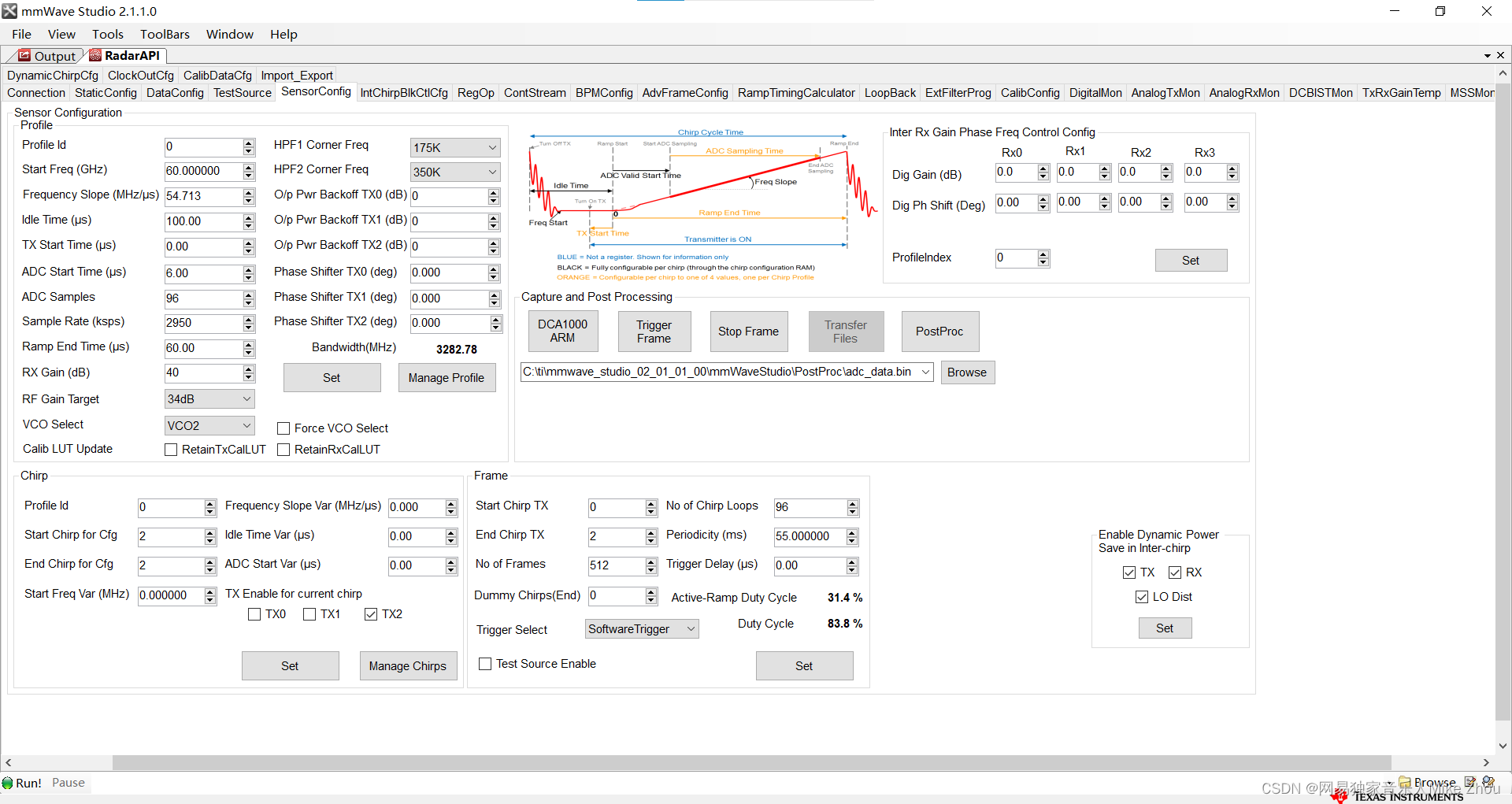
在inter frame Periodicity时间内(比如这里整个周期是55ms)
就是用于计算和处理的时间 一定比55ms要小
如果chirps很多的话 那么计算时间就会减小
如果是处理点云数据 则只需要每一帧计算一次点云即可
计算出当前帧的xyz坐标和速度 以及保存时间戳
雷达天线排列位置
在工业雷达包:
C:\ti\mmwave_industrial_toolbox_4_12_0\antennas\ant_rad_patterns
路径下 有各个EVM开发板的天线排列说明
同样的 EVM手册中也有
如IWR6843AOPEVM:
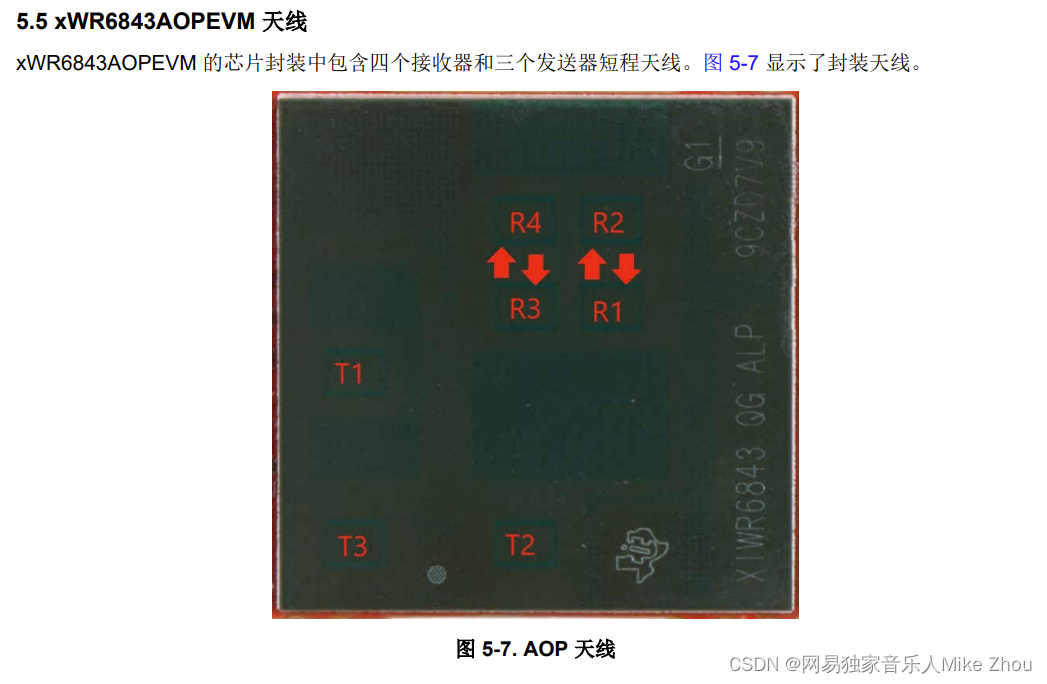
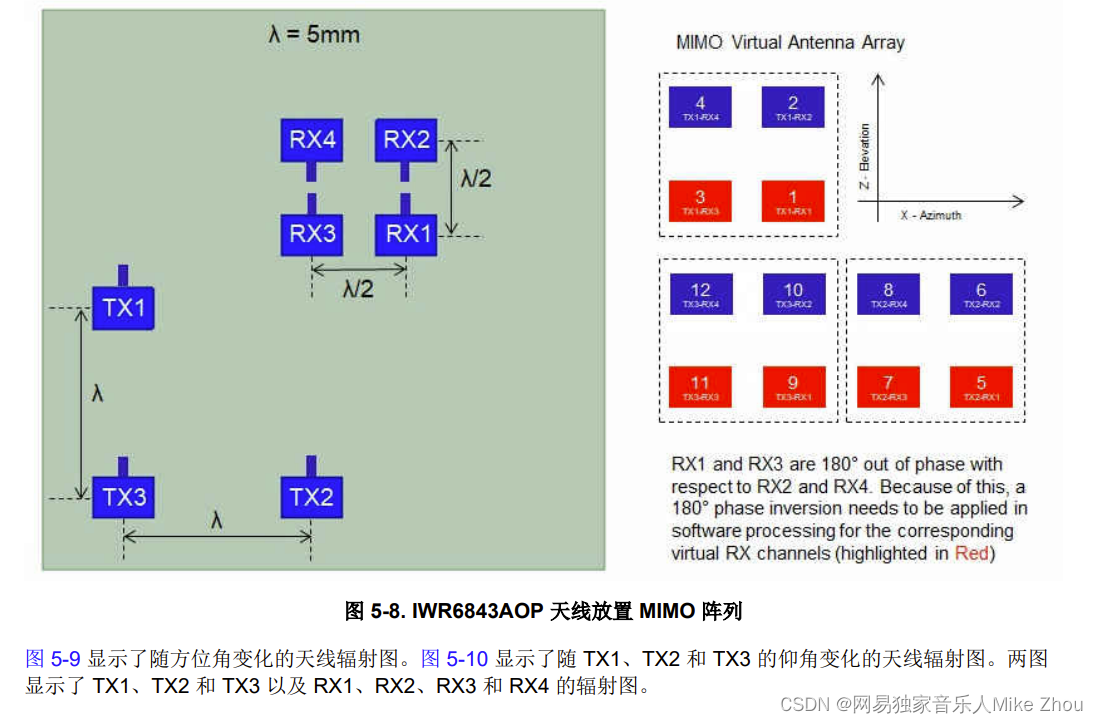
其天线的间距等等位于数据手册:
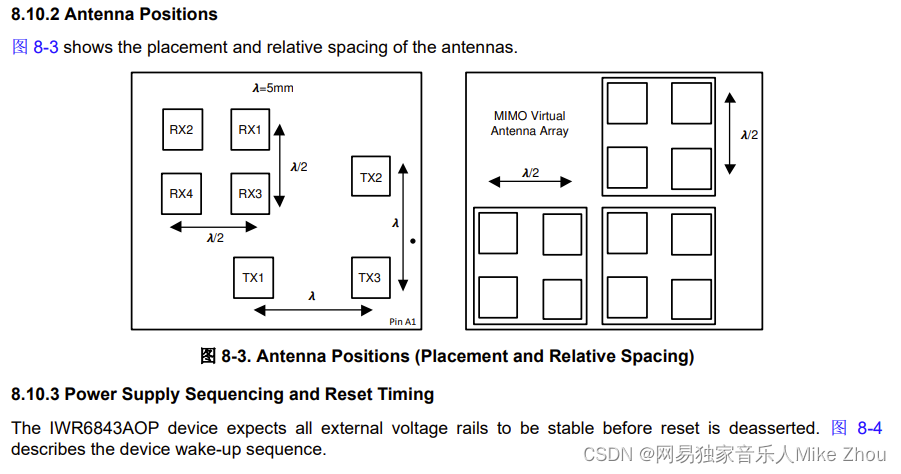
芯片框架
IWR6843AOP可以分成三个主要部分及多个外设
BSS:雷达前端部分
MSS:cortex-rf4内核 主要用于控制
DSS: DSP C674内核 主要用于信号处理
外设:UART GPIO DPM HWA等
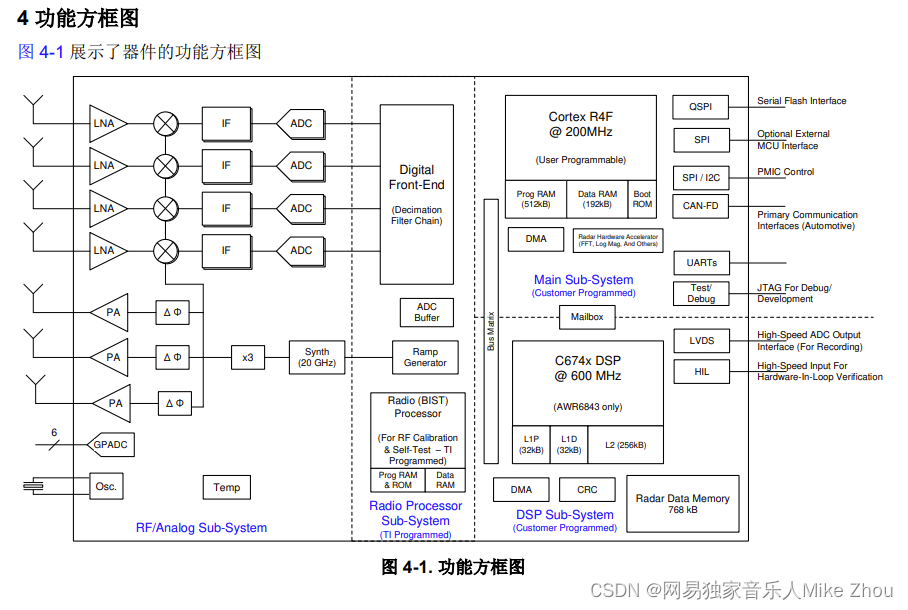
其中 大部分外设可以被MSS或DSS调用
另外 雷达前端BSS部分在SDK里由MMWave API调用
代码框架上 可以分成两个代码 MSS和DSS 两个代码同时运行 通过某些外设进行同步 协同运作
但也可以只跑一个内核 在仅MSS模式下 依旧可以调用某些用于信号处理的外设 demo代码就是如此
如下图为demo代码流程

Demo工程功能
IWR6843AOP的开箱工程是根据IWR6843AOPEVM开发板来的
该工程可以将IWR6843AOP的两个串口利用起来 实现的功能主要是两个方面:
通过115200波特率的串口配置参数 建立握手协议
通过115200*8的串口输出雷达数据
此工程需要匹配TI官方的上位机:mmWave_Demo_Visualizer_3.6.0来使用
该上位机可以在连接串口后自动化操作 并且对雷达数据可视化
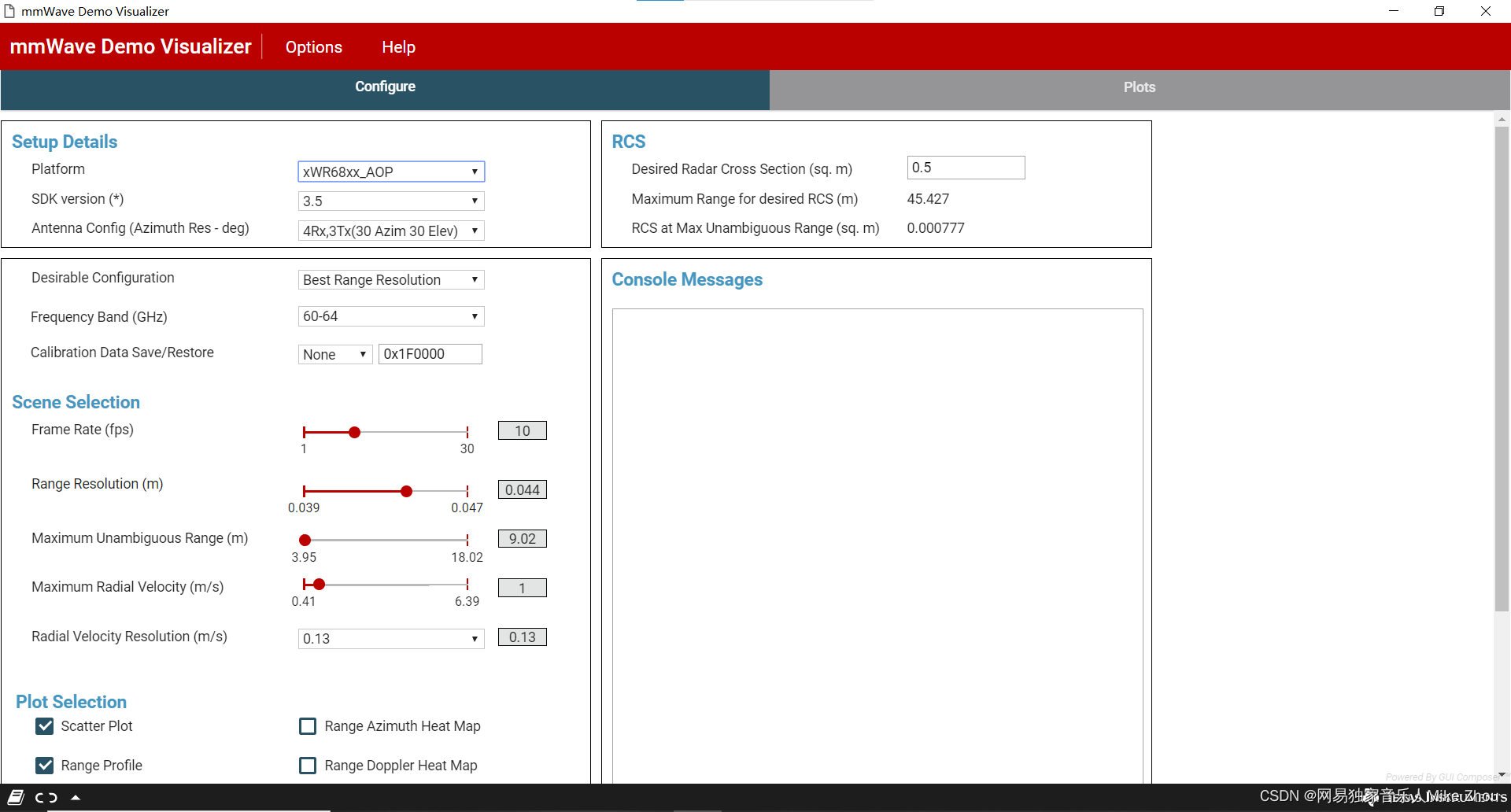
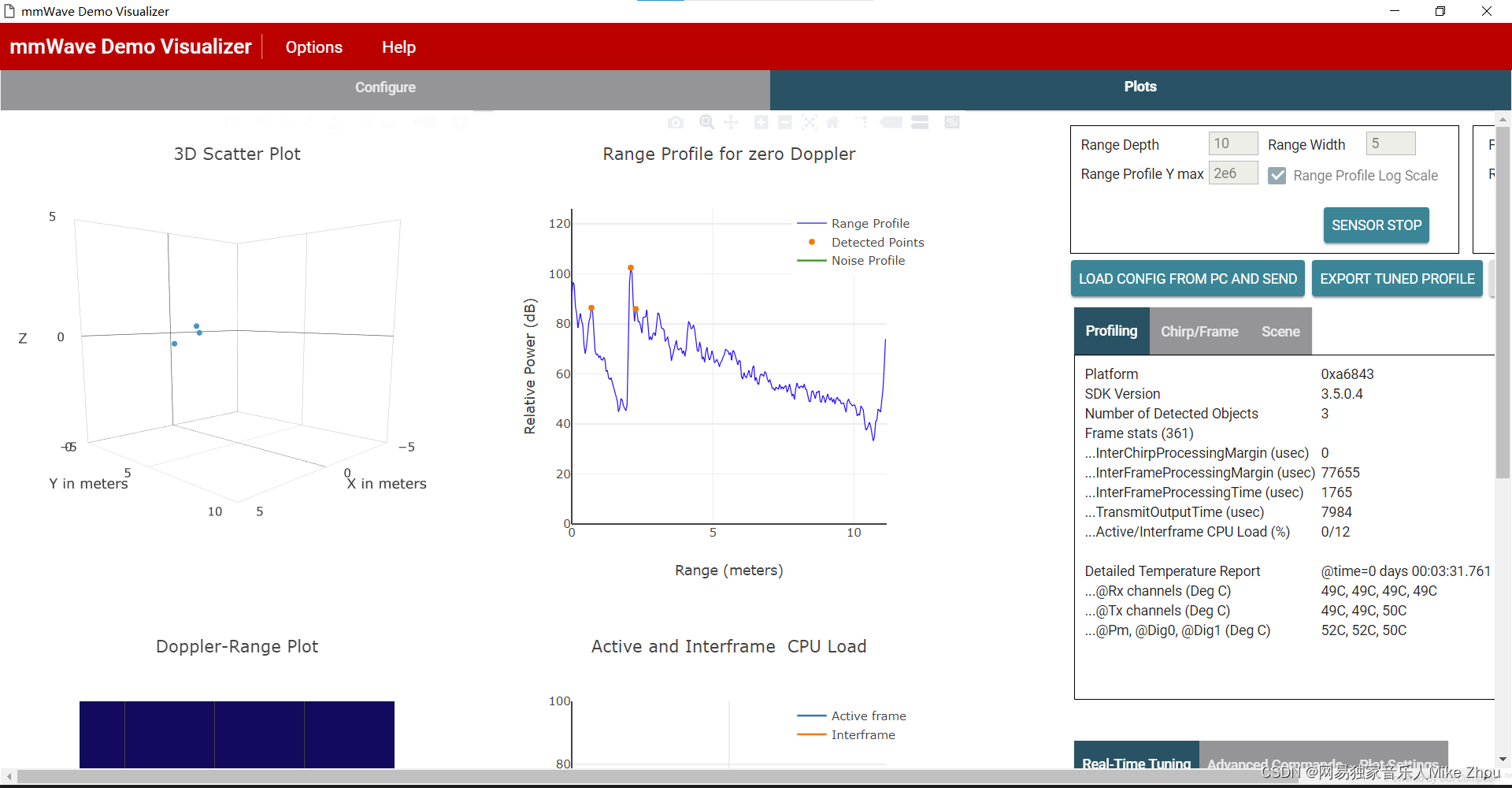

关于雷达参数配置 则在SDK的mmw\profiles目录下
言简意赅 可以直接更改该目录下的文件参数来达到配置雷达参数的目的
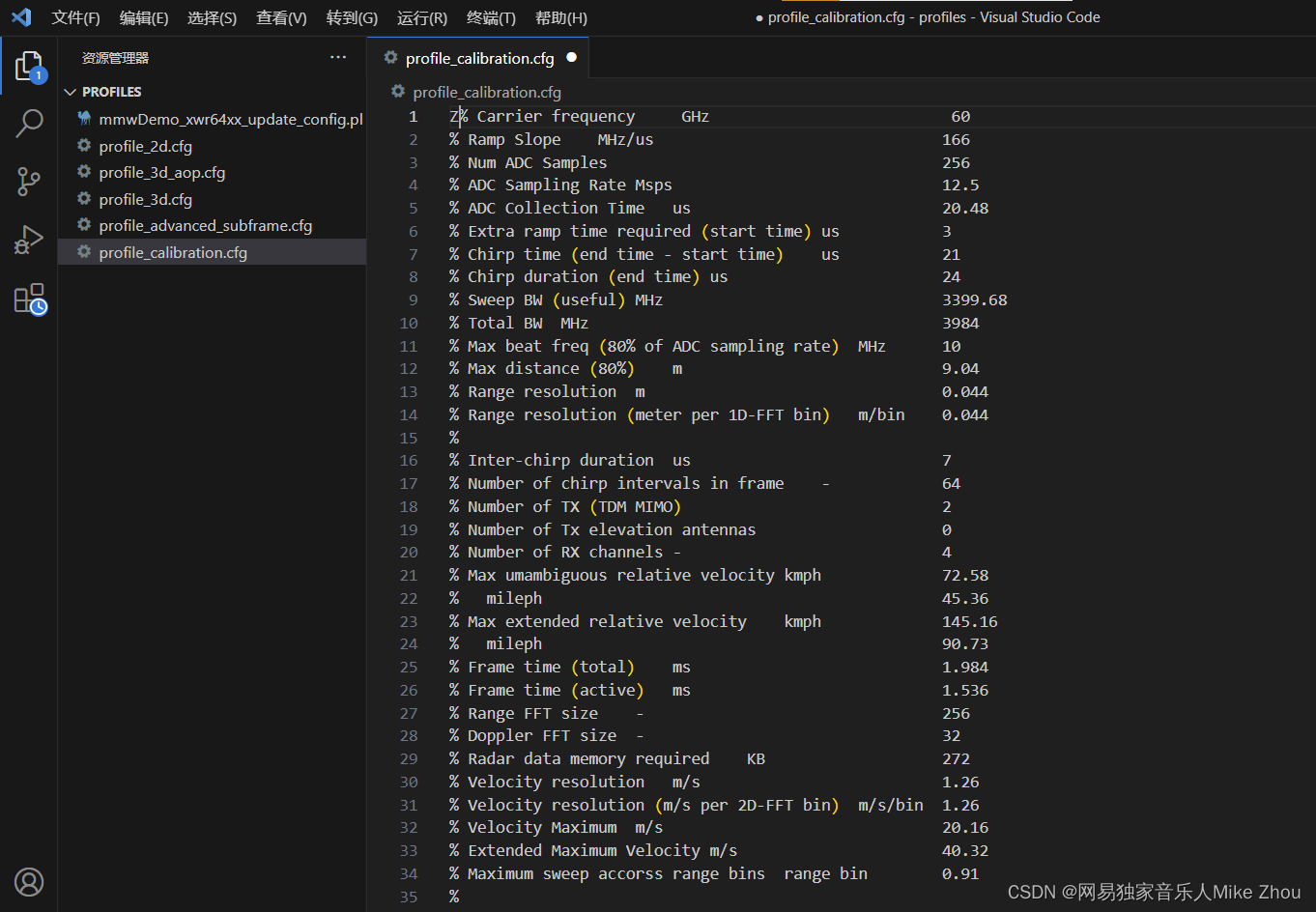
但这种方法不利于直接更改 每次用上位机运行后的参数是固定的(上位机运行需要SDK环境) 所以也可以在代码中写死 本文探讨的就是这个方向
CCS工程导入
首先 在工业雷达包目录下找到该工程设置
C:\ti\mmwave_industrial_toolbox_4_12_0\labs\Out_Of_Box_Demo\src\xwr6843AOP
使用CCS的import project功能导入工程后 即可完成环境搭建

这里用到的SDK最新版为3.6版本
工程叙述
以下来自官方文档 可以直接跳过
Software Tasks
The demo consists of the following (SYSBIOS) tasks:
MmwDemo_initTask. This task is created/launched by main and is a one-time active task whose main functionality is to initialize drivers (<driver>_init), MMWave module (MMWave_init), DPM module (DPM_init), open UART and data path related drivers (EDMA, HWA), and create/launch the following tasks (the CLI_task is launched indirectly by calling CLI_open).
CLI_task. This command line interface task provides a simplified 'shell' interface which allows the configuration of the BSS via the mmWave interface (MMWave_config). It parses input CLI configuration commands like chirp profile and GUI configuration. When sensor start CLI command is parsed, all actions related to starting sensor and starting the processing the data path are taken. When sensor stop CLI command is parsed, all actions related to stopping the sensor and stopping the processing of the data path are taken
MmwDemo_mmWaveCtrlTask. This task is used to provide an execution context for the mmWave control, it calls in an endless loop the MMWave_execute API.
MmwDemo_DPC_ObjectDetection_dpmTask. This task is used to provide an execution context for DPM (Data Path Manager) execution, it calls in an endless loop the DPM_execute API. In this context, all of the registered object detection DPC (Data Path Chain) APIs like configuration, control and execute will take place. In this task. When the DPC's execute API produces the detected objects and other results, they are transmitted out of the UART port for display using the visualizer.
Data Path

Top Level Data Path Processing Chain

Top Level Data Path Timing
The data path processing consists of taking ADC samples as input and producing detected objects (point-cloud and other information) to be shipped out of UART port to the PC. The algorithm processing is realized using the DPM registered Object Detection DPC. The details of the processing in DPC can be seen from the following doxygen documentation:
ti/datapath/dpc/objectdetection/objdethwa/docs/doxygen/html/index.html
Output information sent to host
Output packets with the detection information are sent out every frame through the UART. Each packet consists of the header MmwDemo_output_message_header_t and the number of TLV items containing various data information with types enumerated in MmwDemo_output_message_type_e. The numerical values of the types can be found in mmw_output.h. Each TLV item consists of type, length (MmwDemo_output_message_tl_t) and payload information. The structure of the output packet is illustrated in the following figure. Since the length of the packet depends on the number of detected objects it can vary from frame to frame. The end of the packet is padded so that the total packet length is always multiple of 32 Bytes.
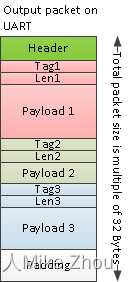
Output packet structure sent to UART
The following subsections describe the structure of each TLV.
List of detected objects
Type: (MMWDEMO_OUTPUT_MSG_DETECTED_POINTS)Length: (Number of detected objects) x (size of DPIF_PointCloudCartesian_t)Value: Array of detected objects. The information of each detected object is as per the structure DPIF_PointCloudCartesian_t. When the number of detected objects is zero, this TLV item is not sent. The maximum number of objects that can be detected in a sub-frame/frame is DPC_OBJDET_MAX_NUM_OBJECTS.The orientation of x,y and z axes relative to the sensor is as per the following figure. (Note: The antenna arrangement in the figure is shown for standard EVM (see gAntDef_default) as an example but the figure is applicable for any antenna arrangement.)
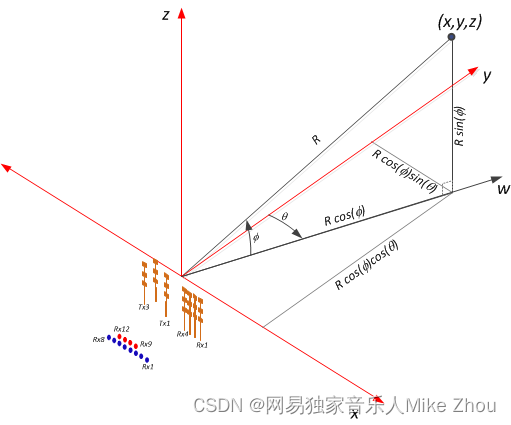
Coordinate Geometry
The whole detected objects TLV structure is illustrated in figure below.
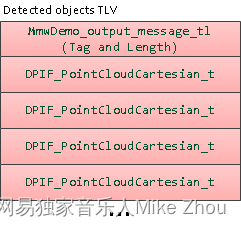
Detected objects TLV
Range profile
Type: (MMWDEMO_OUTPUT_MSG_RANGE_PROFILE)Length: (Range FFT size) x (size of uint16_t)Value: Array of profile points at 0th Doppler (stationary objects). The points represent the sum of log2 magnitudes of received antennas expressed in Q9 format.Noise floor profile
Type: (MMWDEMO_OUTPUT_MSG_NOISE_PROFILE)Length: (Range FFT size) x (size of uint16_t)Value: This is the same format as range profile but the profile is at the maximum Doppler bin (maximum speed objects). In general for stationary scene, there would be no objects or clutter at maximum speed so the range profile at such speed represents the receiver noise floor.
Azimuth static heatmap
Type: (MMWDEMO_OUTPUT_MSG_AZIMUT_STATIC_HEAT_MAP)Length: (Range FFT size) x (Number of "azimuth" virtual antennas) (size of cmplx16ImRe_t_)Value: Array DPU_AoAProcHWA_HW_Resources::azimuthStaticHeatMap. The antenna data are complex symbols, with imaginary first and real second in the following order:
Imag(ant 0, range 0), Real(ant 0, range 0),...,Imag(ant N-1, range 0),Real(ant N-1, range 0)...Imag(ant 0, range R-1), Real(ant 0, range R-1),...,Imag(ant N-1, range R-1),Real(ant N-1, range R-1)
Note that the number of virtual antennas is equal to the number of “azimuth” virtual antennas. The antenna symbols are arranged in the order as they occur at the input to azimuth FFT. Based on this data the static azimuth heat map could be constructed by the GUI running on the host.
Azimuth/Elevation static heatmap
Type: (MMWDEMO_OUTPUT_MSG_AZIMUT_ELEVATION_STATIC_HEAT_MAP)Length: (Range FFT size) x (Number of all virtual antennas) (size of cmplx16ImRe_t_)Value: Array DPU_AoAProcHWA_HW_Resources::azimuthStaticHeatMap. The antenna data are complex symbols, with imaginary first and real second in the following order:
Imag(ant 0, range 0), Real(ant 0, range 0),...,Imag(ant N-1, range 0),Real(ant N-1, range 0)...Imag(ant 0, range R-1), Real(ant 0, range R-1),...,Imag(ant N-1, range R-1),Real(ant N-1, range R-1)
Note that the number of virtual antennas is equal to the total number of active virtual antennas. The antenna symbols are arranged in the order as they occur in the radar cube matrix. This TLV is sent by AOP version of MMW demo, that uses AOA2D DPU. Based on this data the static azimuth or elevation heat map could be constructed by the GUI running on the host.
Range/Doppler heatmap
Type: (MMWDEMO_OUTPUT_MSG_RANGE_DOPPLER_HEAT_MAP)Length: (Range FFT size) x (Doppler FFT size) (size of uint16_t)Value: Detection matrix DPIF_DetMatrix::data. The order is :
X(range bin 0, Doppler bin 0),...,X(range bin 0, Doppler bin D-1),...X(range bin R-1, Doppler bin 0),...,X(range bin R-1, Doppler bin D-1)
Stats information
Type: (MMWDEMO_OUTPUT_MSG_STATS )Length: (size of MmwDemo_output_message_stats_t)Value: Timing information as per MmwDemo_output_message_stats_t. See timing diagram below related to the stats.

Processing timing
Note:The MmwDemo_output_message_stats_t::interChirpProcessingMargin is not computed (it is always set to 0). This is because there is no CPU involvement in the 1D processing (only HWA and EDMA are involved), and it is not possible to know how much margin is there in chirp processing without CPU being notified at every chirp when processing begins (chirp event) and when the HWA-EDMA computation ends. The CPU is intentionally kept free during 1D processing because a real application may use this time for doing some post-processing algorithm execution.
While the MmwDemo_output_message_stats_t::interFrameProcessingTime reported will be of the current sub-frame/frame, the MmwDemo_output_message_stats_t::interFrameProcessingMargin and MmwDemo_output_message_stats_t::transmitOutputTime will be of the previous sub-frame (of the same MmwDemo_output_message_header_t::subFrameNumber as that of the current sub-frame) or of the previous frame.
The MmwDemo_output_message_stats_t::interFrameProcessingMargin excludes the UART transmission time (available as MmwDemo_output_message_stats_t::transmitOutputTime). This is done intentionally to inform the user of a genuine inter-frame processing margin without being influenced by a slow transport like UART, this transport time can be significantly longer for example when streaming out debug information like heat maps. Also, in a real product deployment, higher speed interfaces (e.g LVDS) are likely to be used instead of UART. User can calculate the margin that includes transport overhead (say to determine the max frame rate that a particular demo configuration will allow) using the stats because they also contain the UART transmission time.
The CLI command “guMonitor” specifies which TLV element will be sent out within the output packet. The arguments of the CLI command are stored in the structure MmwDemo_GuiMonSel_t.
Side information of detected objects
Type: (MMWDEMO_OUTPUT_MSG_DETECTED_POINTS_SIDE_INFO)Length: (Number of detected objects) x (size of DPIF_PointCloudSideInfo_t)Value: Array of detected objects side information. The side information of each detected object is as per the structure DPIF_PointCloudSideInfo_t). When the number of detected objects is zero, this TLV item is not sent.
Temperature Stats
Type: (MMWDEMO_OUTPUT_MSG_TEMPERATURE_STATS)Length: (size of MmwDemo_temperatureStats_t)Value: Structure of detailed temperature report as obtained from Radar front end. MmwDemo_temperatureStats_t::tempReportValid is set to return value of rlRfGetTemperatureReport. If MmwDemo_temperatureStats_t::tempReportValid is 0, values in MmwDemo_temperatureStats_t::temperatureReport are valid else they should be ignored. This TLV is sent along with Stats TLV described in Stats information
Range Bias and Rx Channel Gain/Phase Measurement and Compensation
Because of imperfections in antenna layouts on the board, RF delays in SOC, etc, there is need to calibrate the sensor to compensate for bias in the range estimation and receive channel gain and phase imperfections. The following figure illustrates the calibration procedure.
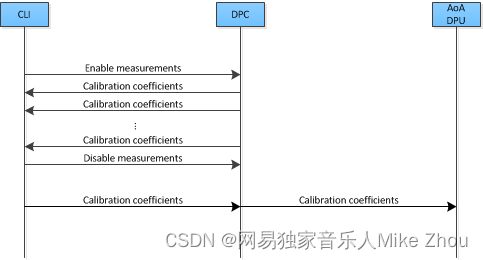
Calibration procedure ladder diagram
The calibration procedure includes the following steps:Set a strong target like corner reflector at the distance of X meter (X less than 50 cm is not recommended) at boresight.
Set the following command in the configuration profile in .../profiles/profile_calibration.cfg, to reflect the position X as follows: where D (in meters) is the distance of window around X where the peak will be searched. The purpose of the search window is to allow the test environment from not being overly constrained say because it may not be possible to clear it of all reflectors that may be stronger than the one used for calibration. The window size is recommended to be at least the distance equivalent of a few range bins. One range bin for the calibration profile (profile_calibration.cfg) is about 5 cm. The first argument "1" is to enable the measurement. The stated configuration profile (.cfg) must be used otherwise the calibration may not work as expected (this profile ensures all transmit and receive antennas are engaged among other things needed for calibration).measureRangeBiasAndRxChanPhase 1 X D
Start the sensor with the configuration file.
In the configuration file, the measurement is enabled because of which the DPC will be configured to perform the measurement and generate the measurement result (DPU_AoAProc_compRxChannelBiasCfg_t) in its result structure (DPC_ObjectDetection_ExecuteResult_t::compRxChanBiasMeasurement), the measurement results are written out on the CLI port (MmwDemo_measurementResultOutput) in the format below: For details of how DPC performs the measurement, see the DPC documentation.compRangeBiasAndRxChanPhase <rangeBias> <Re(0,0)> <Im(0,0)> <Re(0,1)> <Im(0,1)> ... <Re(0,R-1)> <Im(0,R-1)> <Re(1,0)> <Im(1,0)> ... <Re(T-1,R-1)> <Im(T-1,R-1)>
The command printed out on the CLI now can be copied and pasted in any configuration file for correction purposes. This configuration will be passed to the DPC for the purpose of applying compensation during angle computation, the details of this can be seen in the DPC documentation. If compensation is not desired, the following command should be given (depending on the EVM and antenna arrangement) Above sets the range bias to 0 and the phase coefficients to unity so that there is no correction. Note the two commands must always be given in any configuration file, typically the measure commmand will be disabled when the correction command is the desired one.For ISK EVM:compRangeBiasAndRxChanPhase 0.0 1 0 1 0 1 0 1 0 1 0 1 0 1 0 1 0 1 0 1 0 1 0 1 0 For AOP EVMcompRangeBiasAndRxChanPhase 0.0 1 0 -1 0 1 0 -1 0 1 0 -1 0 1 0 -1 0 1 0 -1 0 1 0 -1 0
Streaming data over LVDS
The LVDS streaming feature enables the streaming of HW data (a combination of ADC/CP/CQ data) and/or user specific SW data through LVDS interface. The streaming is done mostly by the CBUFF and EDMA peripherals with minimal CPU intervention. The streaming is configured through the MmwDemo_LvdsStreamCfg_t CLI command which allows control of HSI header, enable/disable of HW and SW data and data format choice for the HW data. The choices for data formats for HW data are:MMW_DEMO_LVDS_STREAM_CFG_DATAFMT_DISABLED
MMW_DEMO_LVDS_STREAM_CFG_DATAFMT_ADC
MMW_DEMO_LVDS_STREAM_CFG_DATAFMT_CP_ADC_CQ
In order to see the high-level data format details corresponding to the above data format configurations, refer to the corresponding slides in ti\drivers\cbuff\docs\CBUFF_Transfers.pptxWhen HW data LVDS streaming is enabled, the ADC/CP/CQ data is streamed per chirp on every chirp event. When SW data streaming is enabled, it is streamed during inter-frame period after the list of detected objects for that frame is computed. The SW data streamed every frame/sub-frame is composed of the following in time:HSI header (HSIHeader_t): refer to HSI module for details.
User data header: MmwDemo_LVDSUserDataHeader
User data payloads:
Point-cloud information as a list : DPIF_PointCloudCartesian_t x number of detected objects
Point-cloud side information as a list : DPIF_PointCloudSideInfo_t x number of detected objects
The format of the SW data streamed is shown in the following figure:

LVDS SW Data format
Note:Only single-chirp formats are allowed, multi-chirp is not supported.
When number of objects detected in frame/sub-frame is 0, there is no transmission beyond the user data header.
For HW data, the inter-chirp duration should be sufficient to stream out the desired amount of data. For example, if the HW data-format is ADC and HSI header is enabled, then the total amount of data generated per chirp is:
(numAdcSamples * numRxChannels * 4 (size of complex sample) + 52 [sizeof(HSIDataCardHeader_t) + sizeof(HSISDKHeader_t)] ) rounded up to multiples of 256 [=sizeof(HSIHeader_t)] bytes.
The chirp time Tc in us = idle time + ramp end time in the profile configuration. For n-lane LVDS with each lane at a maximum of B Mbps,
maximum number of bytes that can be send per chirp = Tc * n * B / 8 which should be greater than the total amount of data generated per chirp i.e
Tc * n * B / 8 >= round-up(numAdcSamples * numRxChannels * 4 + 52, 256).
E.g if n = 2, B = 600 Mbps, idle time = 7 us, ramp end time = 44 us, numAdcSamples = 512, numRxChannels = 4, then 7650 >= 8448 is violated so this configuration will not work. If the idle-time is doubled in the above example, then we have 8700 > 8448, so this configuration will work.
For SW data, the number of bytes to transmit each sub-frame/frame is:
52 [sizeof(HSIDataCardHeader_t) + sizeof(HSISDKHeader_t)] + sizeof(MmwDemo_LVDSUserDataHeader_t) [=8] +
number of detected objects (Nd) * { sizeof(DPIF_PointCloudCartesian_t) [=16] + sizeof(DPIF_PointCloudSideInfo_t) [=4] } rounded up to multiples of 256 [=sizeof(HSIHeader_t)] bytes.
or X = round-up(60 + Nd * 20, 256). So the time to transmit this data will be
X * 8 / (n*B) us. The maximum number of objects (Ndmax) that can be detected is defined in the DPC (DPC_OBJDET_MAX_NUM_OBJECTS). So if Ndmax = 500, then time to transmit SW data is 68 us. Because we parallelize this transmission with the much slower UART transmission, and because UART transmission is also sending at least the same amount of information as the LVDS, the LVDS transmission time will not add any burdens on the processing budget beyond the overhead of reconfiguring and activating the CBUFF session (this overhead is likely bigger than the time to transmit).
The total amount of data to be transmitted in a HW or SW packet must be greater than the minimum required by CBUFF, which is 64 bytes or 32 CBUFF Units (this is the definition CBUFF_MIN_TRANSFER_SIZE_CBUFF_UNITS in the CBUFF driver implementation). If this threshold condition is violated, the CBUFF driver will return an error during configuration and the demo will generate a fatal exception as a result. When HSI header is enabled, the total transfer size is ensured to be at least 256 bytes, which satisfies the minimum. If HSI header is disabled, for the HW session, this means that numAdcSamples * numRxChannels * 4 >= 64. Although mmwavelink allows minimum number of ADC samples to be 2, the demo is supported for numAdcSamples >= 64. So HSI header is not required to be enabled for HW only case. But if SW session is enabled, without the HSI header, the bytes in each packet will be 8 + Nd * 20. So for frames/sub-frames where Nd < 3, the demo will generate exception. Therefore HSI header must be enabled if SW is enabled, this is checked in the CLI command validation.
Implementation Notes
The LVDS implementation is mostly present in mmw_lvds_stream.h and mmw_lvds_stream.c with calls in mss_main.c. Additionally HSI clock initialization is done at first time sensor start using MmwDemo_mssSetHsiClk.
EDMA channel resources for CBUFF/LVDS are in the global resource file (mmw_res.h, see Hardware Resource Allocation) along with other EDMA resource allocation. The user data header and two user payloads are configured as three user buffers in the CBUFF driver. Hence SW allocation for EDMA provides for three sets of EDMA resources as seen in the SW part (swSessionEDMAChannelTable[.]) of MmwDemo_LVDSStream_EDMAInit. The maximum number of HW EDMA resources are needed for the data-format MMW_DEMO_LVDS_STREAM_CFG_DATAFMT_CP_ADC_CQ, which as seen in the corresponding slide in ti\drivers\cbuff\docs\CBUFF_Transfers.pptx is 12 channels (+ shadows) including the 1st special CBUFF EDMA event channel which CBUFF IP generates to the EDMA, hence the HW part (hwwSessionEDMAChannelTable[.]) of MmwDemo_LVDSStream_EDMAInit has 11 table entries.
Although the CBUFF driver is configured for two sessions (hw and sw), at any time only one can be active. So depending on the LVDS CLI configuration and whether advanced frame or not, there is logic to activate/deactivate HW and SW sessions as necessary.
The CBUFF session (HW/SW) configure-create and delete depends on whether or not re-configuration is required after the first time configuration.
For HW session, re-configuration is done during sub-frame switching to re-configure for the next sub-frame but when there is no advanced frame (number of sub-frames = 1), the HW configuration does not need to change so HW session does not need to be re-created.
For SW session, even though the user buffer start addresses and sizes of headers remains same, the number of detected objects which determines the sizes of some user buffers changes from one sub-frame/frame to another sub-frame/frame. Therefore SW session needs to be recreated every sub-frame/frame.
User may modify the application software to transmit different information than point-cloud in the SW data e.g radar cube data (output of range DPU). However the CBUFF also has a maximum link list entry size limit of 0x3FFF CBUFF units or 32766 bytes. This means it is the limit for each user buffer entry [there are maximum of 3 entries -1st used for user data header, 2nd for point-cloud and 3rd for point-cloud side information]. During session creation, if this limit is exceeded, the CBUFF will return an error (and demo will in turn generate an exception). A single physical buffer of say size 50000 bytes may be split across two user buffers by providing one user buffer with (address, size) = (start address, 25000) and 2nd user buffer with (address, size) = (start address + 25000, 25000), beyond this two (or three if user data header is also replaced) limit, the user will need to create and activate (and wait for completion) the SW session multiple times to accomplish the transmission.
The following figure shows a timing diagram for the LVDS streaming (the figure is not to scale as actual durations will vary based on configuration).

How to bypass CLI
Re-implement the file mmw_cli.c as follows:MmwDemo_CLIInit should just create a task with input taskPriority. Lets say the task is called "MmwDemo_sensorConfig_task".
All other functions are not needed
Implement the MmwDemo_sensorConfig_task as follows:
Fill gMmwMCB.cfg.openCfg
Fill gMmwMCB.cfg.ctrlCfg
Add profiles and chirps using MMWave_addProfile and MMWave_addChirp functions
Call MmwDemo_CfgUpdate for every offset in Offsets for storing CLI configuration (MMWDEMO_xxx_OFFSET in mmw.h)
Fill gMmwMCB.dataPathObj.objDetCommonCfg.preStartCommonCfg
Call MmwDemo_openSensor
Call MmwDemo_startSensor (One can use helper function MmwDemo_isAllCfgInPendingState to know if all dynamic config was provided)
Hardware Resource Allocation
The Object Detection DPC needs to configure the DPUs hardware resources (HWA, EDMA). Even though the hardware resources currently are only required to be allocated for this one and only DPC in the system, the resource partitioning is shown to be in the ownership of the demo. This is to illustrate the general case of resource allocation across more than one DPCs and/or demo's own processing that is post-DPC processing. This partitioning can be seen in the mmw_res.h file. This file is passed as a compiler command line define
"--define=APP_RESOURCE_FILE="<ti/demo/xwr64xx/mmw/mmw_res.h>"
in mmw.mak when building the DPC sources as part of building the demo application and is referred in object detection DPC sources where needed as
#include APP_RESOURCE_FILE
相关文章:

【TI毫米波雷达】IWR6843AOP的官方文件资源名称BUG,选择xwr68xx还是xwr64xx,及需要注意的问题
【TI毫米波雷达】IWR6843AOP的官方文件资源名称BUG,选择xwr68xx还是xwr64xx,及需要注意的问题 文章目录 demo工程out_of_box文件调试bin文件名称需要注意的问题附录:结构框架雷达基本原理叙述雷达天线排列位置芯片框架Demo工程功能CCS工程导…...
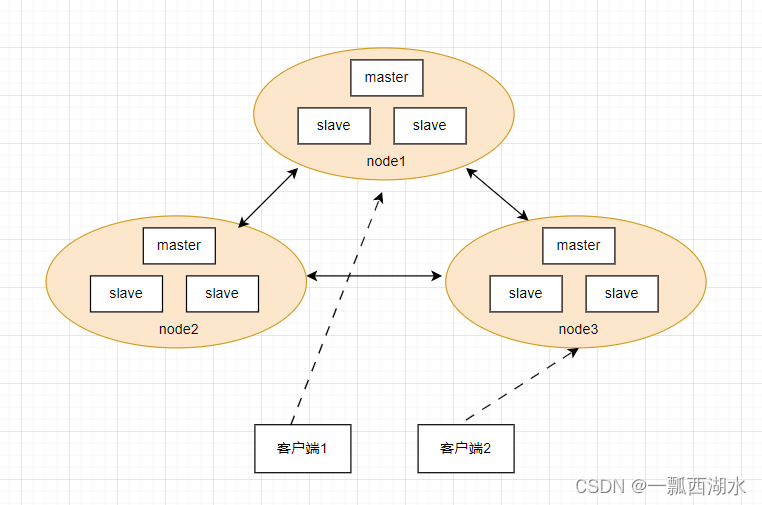
连接Redis不支持集群错误,ERR This instance has cluster support disabled,解决方案
1. 问题背景 调整redis的配置后,启动程序时, 会报如下错误: [redis://172.16.0.8xxx]: ERR This instance has cluster support disabledSuppressed: io.lettuce.core.RedisCommandExecutionException: ERR This instance has cluster supp…...

什么是json?json可以存放哪几种数据类型
JSON指的是JavaScript对象表示法(avaScript Object Notation),是轻量级的文本数据交换格式,独立于语言: JSON使用JavaScript语法来描述数据对象,但是JSON仍然独立于语言和平台,JSON解析器和JSON库支持许多不同的编程语言ÿ…...

网络编程套接字应用分享【Linux C/C++ 】【UDP应用 | TCP应用 | TCP线程池小项目】
目录 前提知识 1. 理解源ip,目的ip和Macip 2. 端口号 3. 初识TCP,UDP协议 4. 网络字节序 5. socket 编程 sockaddr类型 一,基于udp协议编程 1. socket——创建套接字 2. bind——将套接字强绑定 3. recvfrom——接受数据 4. s…...

有关数据开发项目中使用HIVE由于无法update和delete的场景下,如何解决数据增量的思路
解决数据增量问题的思路在Hive中 在数据开发项目中,使用Hive进行数据处理时,由于Hive不支持update和delete语句,处理数据增量可能会变得有些棘手。然而,有几种策略和技术可以帮助我们解决这个问题,并确保数据增量的高…...

两数之和-考察哈希表的运用
题目 给定一个整数数组 n u m s nums nums和一个整数目标值 t a r g e t target target,请你在该数组中找出和为目标值 t a r g e t target target的那 两个整数,并返回它们的数组下标。 你可以假设每种输入只会对应一个答案。但是,数组中同…...
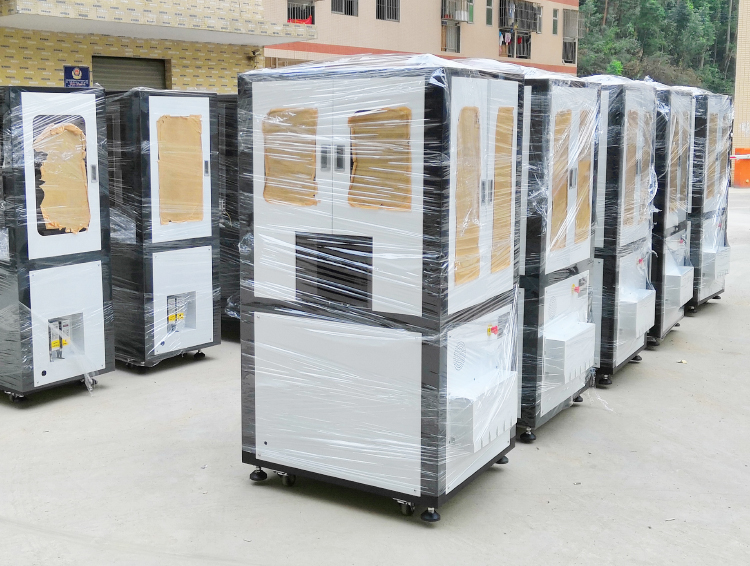
视觉检测系统,外观细节无可挑剔
在传统行业中,利用人工检测来检测产品外观缺陷依然是主流,但由于竞争的加剧,对企业生产效率的要求也越来越高。传统的检测产品外观缺陷问题的方法就是透过人工目检,或者工人采用游标卡尺等工具检测,此种方式检测速度慢…...

C++中string容器的字符串操作
目录 1.c_str() 返回C常量字符串 2.date() 返回C常量字符串 3.substr() 构造子串 4.find() 正向查找(查找失败返回npos) 5.rfind() 逆向查找(查找失败返回npos) 6.find_first_of() 正向查找匹配的字符 7.find_last_of() 逆向…...

Java编程使用CGLIB动态代理介绍与实战演示
文章目录 前言技术积累核心概念主要功能适用场景与JDK动态代理的对比 实战演示定义待代理的目标类实现MethodInterceptor接口使用代理对象 测试结果写在最后 前言 在Java编程中,CGLIB (Code Generation Library) 是一个强大的高性能代码生成库,它通过生…...
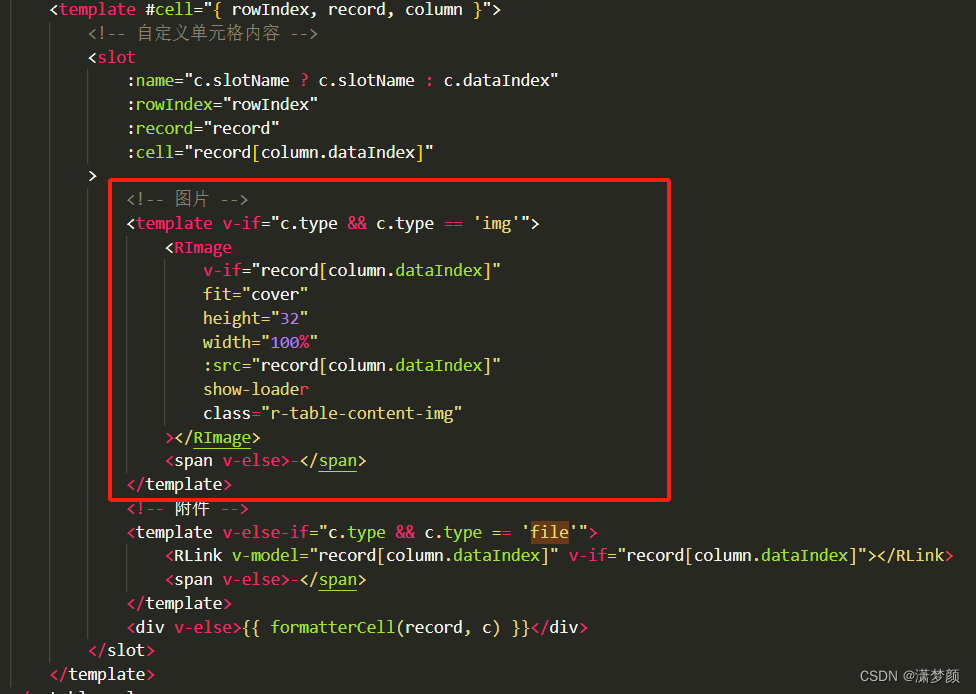
vue3 渲染一个后端返回的图片字段渲染、table表格内放置图片
一、后端直接返回图片url 当图片字段接口直接返回的是图片url,可以直接放到img标签上 <img v-if"thumbLoader" class"r-image-loader-thumb" :src"resUrl" /> 二、当图片字段接口直接返回的是图片Id 那么就需要去拼一下图片…...

iOS开发进阶(十三):脚手架创建iOS项目
文章目录 一、前言二、xcode-select 命令三、拓展阅读 一、前言 项目初期,需要搭建项目基本框架,为此离不开辅助工具,即脚手架。当然,IDE也可以实现新建空白项目,但是其新建后的项目结构可能不符合预期设计࿰…...
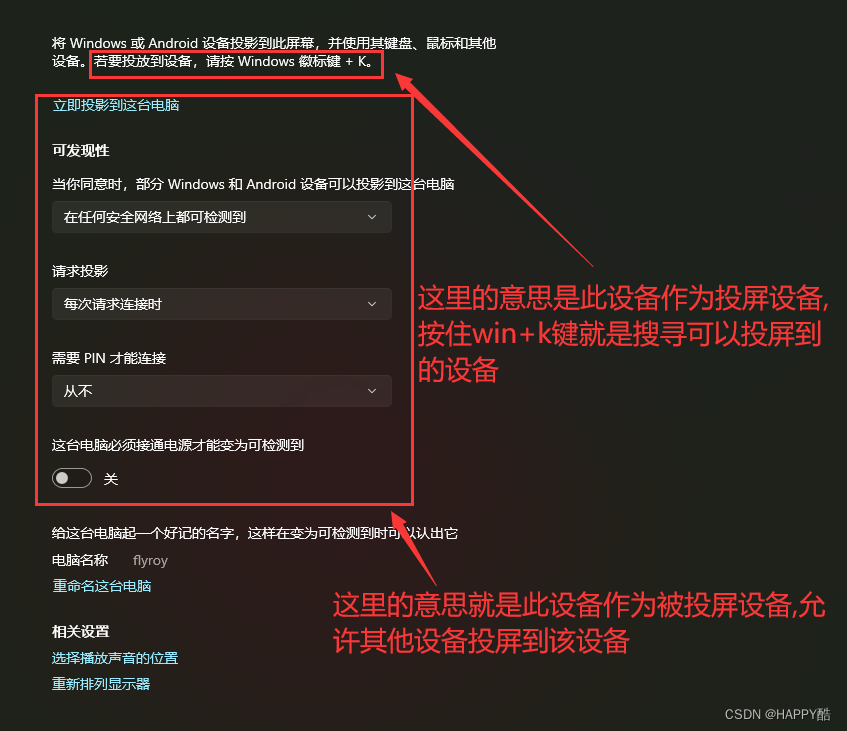
手机无线投屏到windows11电脑
1 安装无线投影组件 2 电脑端打开允许其他设备投影的开关 3 手机找到投屏选项 4 手机搜索可用设备连接即可 这里的官方文档给的不太好,给了一些让人眼花撩乱的信息,以下是经过整合的有效信息...
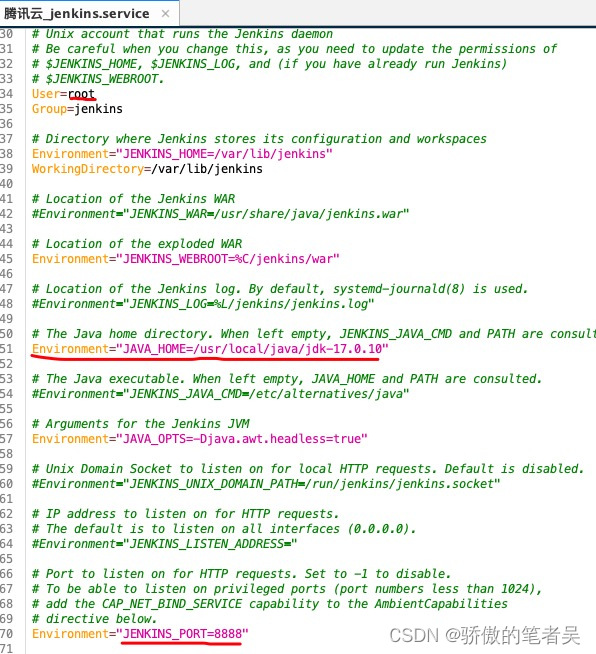
linux 环境安装配置
安装java17 1.下载安装包 wget https://download.oracle.com/java/17/latest/jdk-17_linux-x64_bin.tar.gz 2.解压到自定义目录/usr/local/java mkdir /usr/local/java tar zxvf jdk-17_linux-x64_bin.tar.gz -C /usr/local/java 3.配置环境变量 echo export PATH$PATH:/…...

Git常用语句
设置用户名 git config --global user.name "用户名" git config --global user.email "邮箱"查看git用户信息 cat ~/.gitconfig初始化本地库 git initclone指定分支的代码 git clone -b my_branch gitgitlabxxxxxxxxxxxxxxxxxxxxxx.gitpush三件套 gi…...
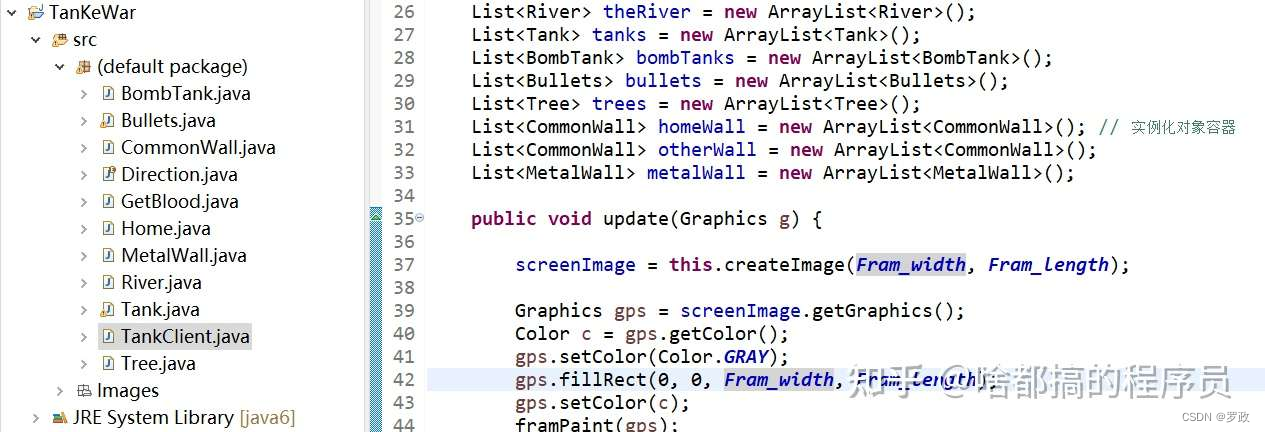
坦克大战_java源码_swing界面_带毕业论文
一. 演示视频 坦克大战_java源码_swing界面_带毕业论文 二. 实现步骤 完整项目获取 https://githubs.xyz/y22.html 部分截图 启动类是 TankClinet.java,内置碰撞检测算法,线程,安全集合,一切皆对象思想等,是java进阶…...
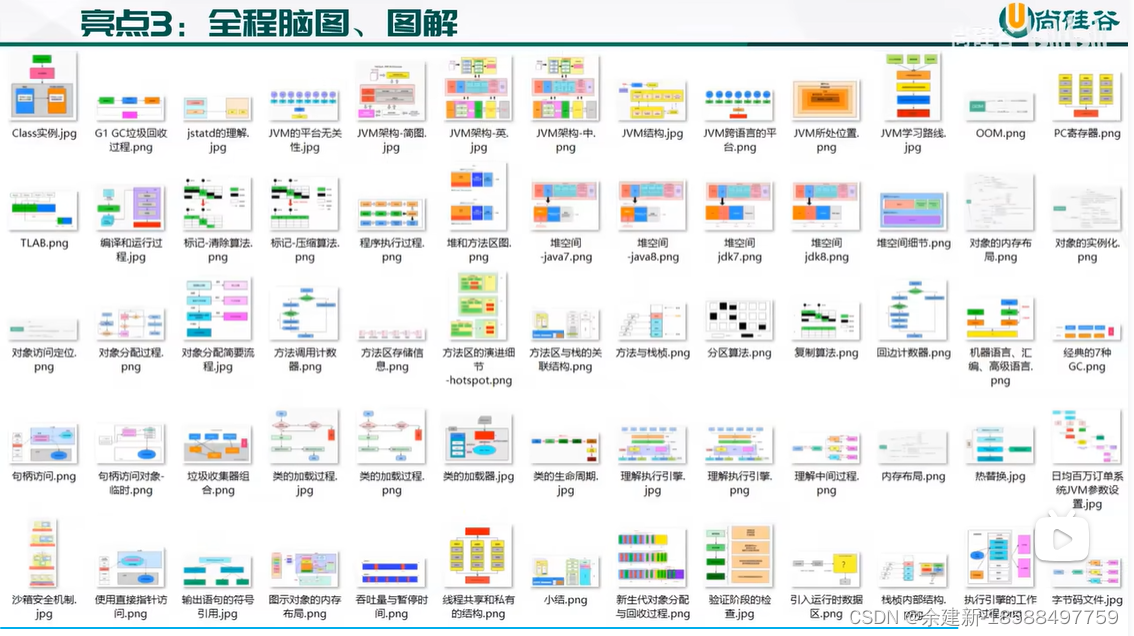
JVM 记录
记录 工具 https://gceasy.io 资料 尚硅谷宋红康JVM全套教程(详解java虚拟机) https://www.bilibili.com/video/BV1PJ411n7xZ?p361 全套课程分为《内存与垃圾回收篇》《字节码与类的加载篇》《性能监控与调优篇》三个篇章。 上篇《内存与垃圾回收篇…...

Linux学习笔记————C 语言版 LED 灯实验
这里写目录标题 一、实验程序编写二、 汇编部分实验程序编写三、C 语言部分实验程序编写四、编译下载验证 汇编 LED 灯实验中,我们讲解了如何使用汇编来编写 LED 灯驱动,实际工作中是很少用到汇编去写嵌入式驱动的,毕竟汇编太难,而…...
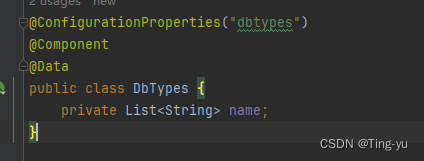
Spring Boot 配置文件
1. 配置文件的作用 配置文件主要是为了解决硬件编码带来的问题,把可能会发生改变的信息,放在一个集中的地方,当我们启动某个程序时,程序从配置文件中读取一些数据,并加载运行。 硬编码是将数据直接放在源代码中&…...

IPKISS ------ 查看器件默认端口名称
IPKISS ------ 查看器件默认端口名称 正文正文 我们这里以 Grating Coupler 举例。 import si_fab.all as pdk import ipkiss3.all as i3class MyGratingCoupler(i3.circuit):gc = i3.childcellProperty(<...

uni-app踩坑记录
uni-app踩坑记录 Failed to load local image resource xxx the server responded with a status of 500 (HTTP/1.1 500 Internal Server Error) Failed to load local image resource xxx the server responded with a status of 500 (HTTP/1.1 500 Internal Server Error) 文…...

【嵌入式硬件】光耦
1.光耦作用 光耦一般用于信号的隔离。当两个电路的电源参考点不相关时,使用光耦可以保证在两边不共地的情况下,完成信号的传输。 2.光耦原理 光耦的原理图如下所示,其内部可以看做一个特殊的“三极管”; 一般的三极管是通过基极B和发射极E间的电流,去控制集电极C和发射极…...
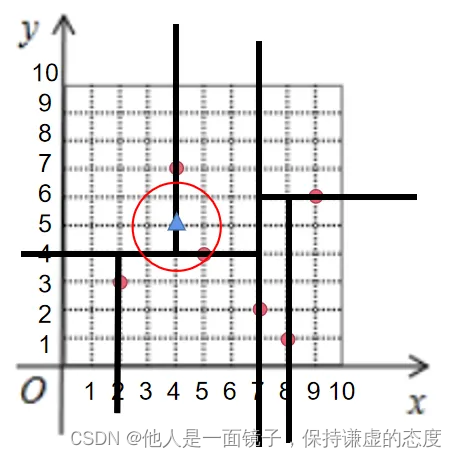
学习Fast-LIO系列代码中相关概念理解
目录 一、流形和流形空间(姿态) 1.1 定义 1.2 为什么要有流形? 1.3 流形要满足什么性质? (1) 拓扑同胚 (2) 可微结构 1.4 欧式空间和流形空间的区别和联系? (1) 区别: (2) 联系: 1.5 将姿态定义在流形上比…...

React 掌握及对比常用的8个Hooks,优化及使用场景
1、useState 在函数组件中,可以使用useState来定义函数组件的状态。使用useState来创建状态。 1.引入2.接收一个参数作为初始值3.返回一个数组,第一个值为状态,第二个值为改变状态的函数 2、 useEffect useEffect又称副作用hooks。作用&…...

DNS域名解析过程
在互联网中我们通信目标是对方的IP,但是由于IP不便于记忆所以引入了域名 域名和IP是一一对应的关系,需要注意的是域名和网址是不同的概念 比如:www.csdn.net是域名,https://www.csdn.net/?spm1001.2101.3001.4476是网址 首先了解…...
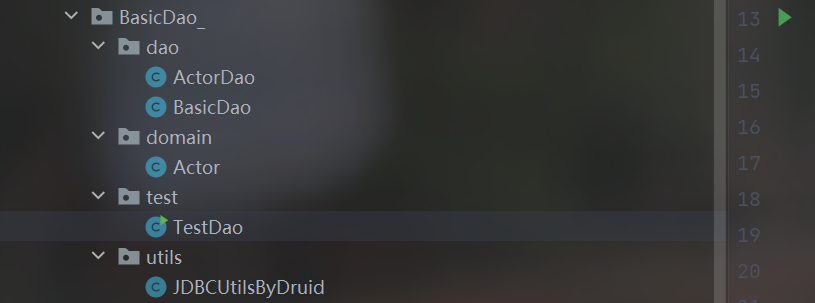
MySQL数据库(数据库连接池)
文章目录 1.批处理应用1.基本介绍2.批处理演示1.创建测试表2.修改url3.编写java代码 3.批处理源码分析 2.数据库连接池1.传统连接弊端分析2.数据库连接池基本介绍1.概念介绍2.数据库连接池示意图3.数据库连接池种类 3.C3P0连接池1.环境配置1.导入jar包2.将整个lib添加到项目中3…...
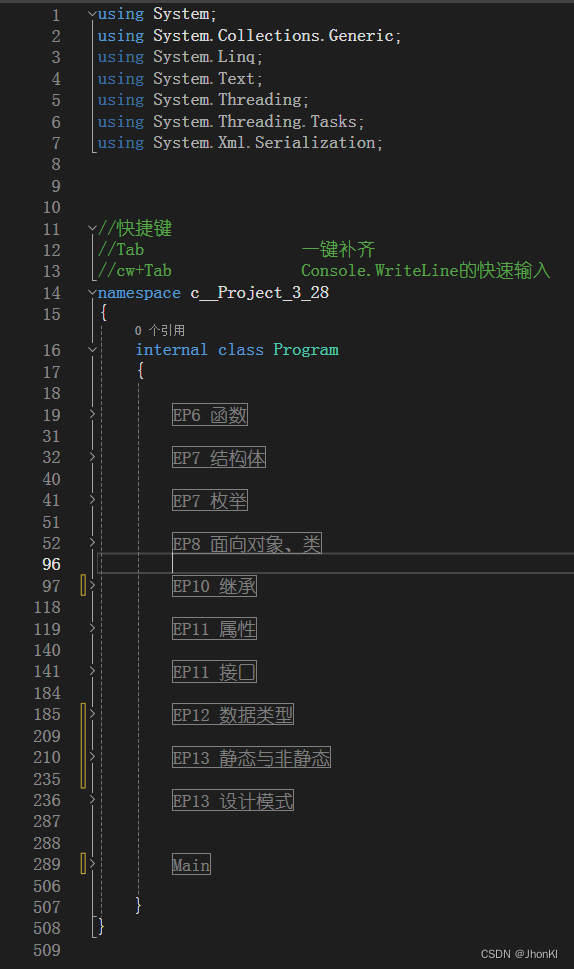
【C#】知识点速通
前言: 笔者是跟着哔站课程(Trigger)学习unity才去学习的C#,并且C语言功底尚存,所以只是简单地跟着课程将unity所用的C#语言的关键部分进行了了解,然后在后期unity学习过程中加以深度学习。如需完善的C#知识…...
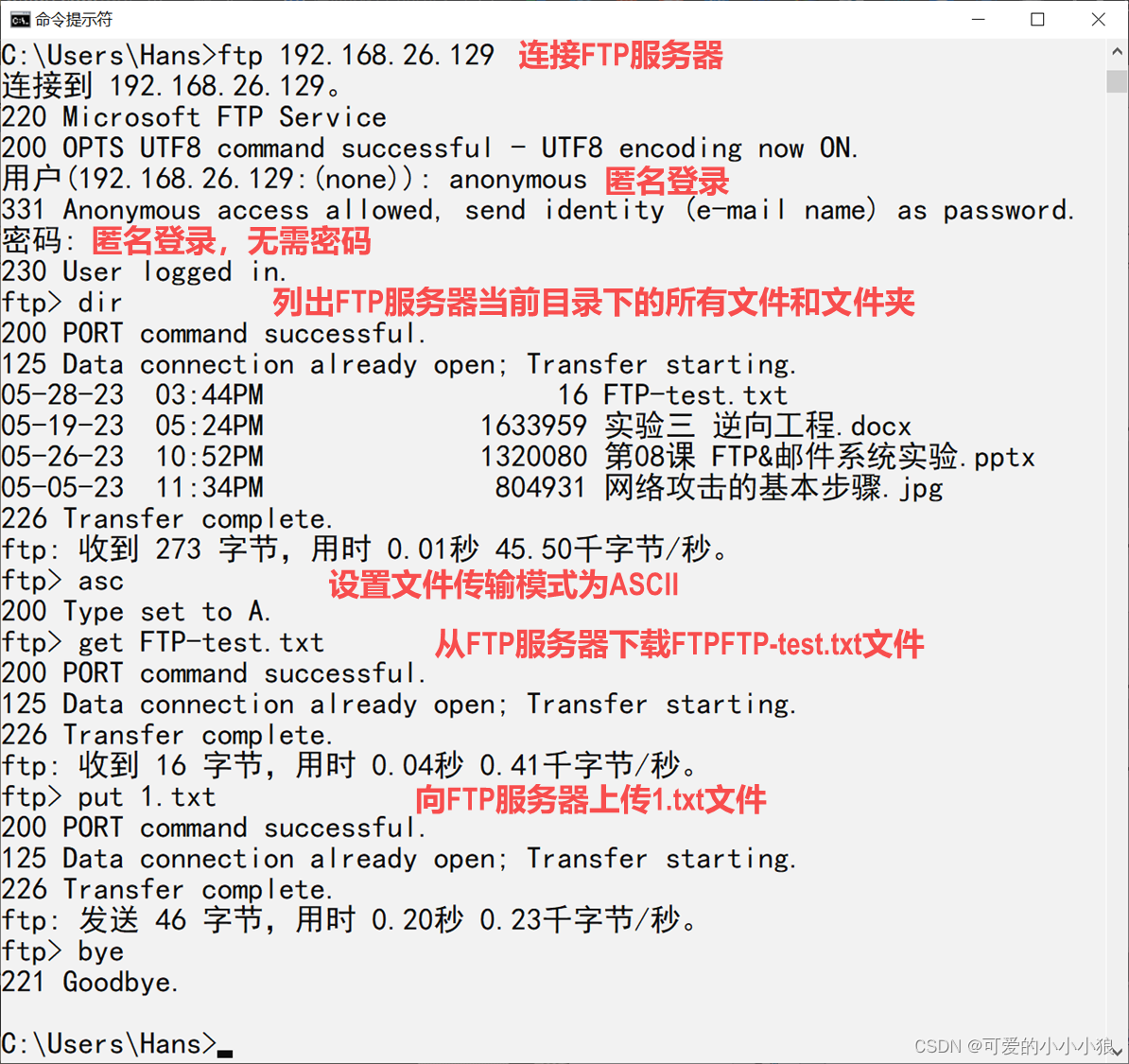
FTP协议
FTP协议 客户端向服务器发送文件。 C/S架构。 运行在TCP/IP协议上面。 FTP客户端要和FTP服务端建立两个TCP连接。 控制连接:运行在整个连接过程,传输控制信息。 数据连接:在每次文件传输时才会建立,文件传输完就关闭。 主动模式…...
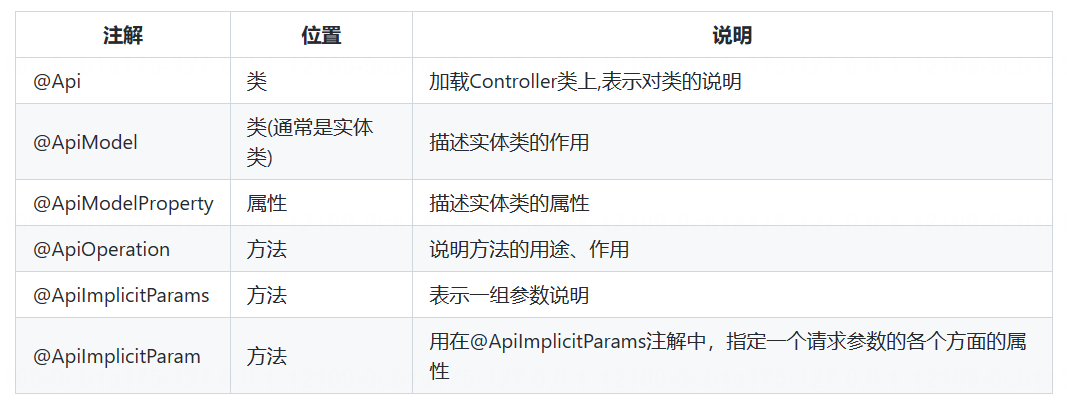
前后端分离开发【Yapi平台】【Swagger注解自动生成接口文档平台】
前后端分离开发 介绍开发流程Yapi(api接口文档编写平台)介绍 Swagger使用方式1). 导入knife4j的maven坐标2). 导入knife4j相关配置类3). 设置静态资源映射4). 在LoginCheckFilter中设置不需要处理的请求路径 查看接口文档常用注解注解介绍 当前项目中&am…...

Android的硬件接口HAL-2 HIDL
没写完哈。 不说废话,直接上干活。 1 创建HAL mkdir -p vendor/fanged/hidltest/1.0/defaultvi vendor/fanged/hidltest/1.0/Ilovefanged.hal package vendor.fanged.hardware.hidltest1.0;interface Ilovefanged {add(int32_t a, int32_t b) generates (int32_t…...

pygame--坦克大战(二)
加载敌方坦克 敌方坦克的方向是随机的,使用随机数生成。 初始化敌方坦克。 class EnemyTank(Tank):def __init__(self,left,top,speed):self.images = {U: pygame.image.load(img/enemy1U.gif),D: pygame.image.load(img/enemy1D.gif),L: pygame.image.load(img/enemy1L.gi…...
